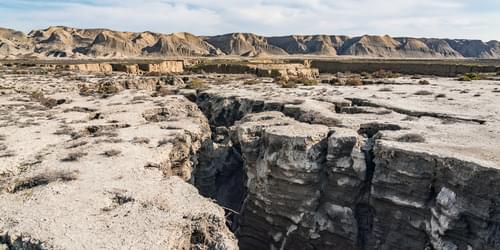Experiments on a bed of plastic beads reveal a temperature-dependent stiffening over time, which appears to be related to molecular-scale deformations.
Inside a geological fault, small rocks and pebble-sized grains can become increasingly lodged together over time so that the push—or stress—needed to get the granular material flowing grows with time. This frictional “aging” can be attributed to several effects, but researchers have now isolated a thermal effect that appears to be related to molecular-level deformations [1]. The team performed experiments on a bed of tiny beads, or grains, slowly rotating them in a start–stop manner that revealed the signatures of grain aging. The temperature dependence of the effect suggested that the behavior arises from a thermally driven interlocking between irregularities on the grain surfaces. The results could provide new insights into the stick–slip behavior recorded in geological faults.
Granular materials—those made of small particles, like sand or soil—have unique properties. For example, in the polymer industry, the force required to begin stirring granular ingredients on Mondays is greater than on other days because the grains have been left immobile over the weekend. This aging effect, in which the force required to break the network of frictional contacts depends on the time that the particles have been resting, also plays a role in the occurrence of earthquakes and landslides. “The longer you wait, the stronger the granular network becomes,” says Kasra Farain from the University of Amsterdam.
